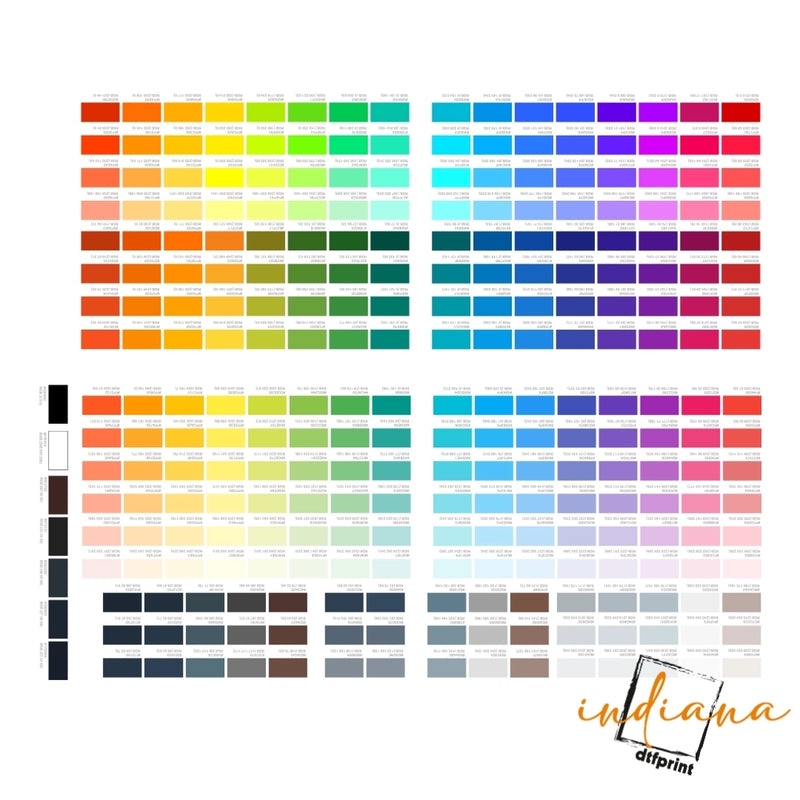Fabric printing in the United States has always been more than just a way to decorate cloth — it’s a reflection of how we express who we are. Every era has left its mark on what we wear and how we make it. From hand-stamped linens to today’s ultra-detailed DTF (Direct-to-Film) prints, the journey of fabric printing in America is one of craft, culture, and constant change.
Let’s take a walk-through history not a dry textbook version, but the real-life story of how Americans turned ink and fabric into wearable art.
Colonial Roots: Handmade with Heart
Back in the 1700s, if you lived in America and wanted printed fabric, you probably relied on imported goods from Europe. British and French textiles usually block-printed by hand were considered luxury items. Locally printed fabric was rare, often crafted with painstaking care using carved wooden stamps.
Imagine a family in Boston printing small floral patterns on linen by hand in candlelight. That was the level of dedication involved. These prints weren’t just fabric they were heirlooms.
The Industrial Age: Printing Meets Progress
Fast forward to the 1800s. The Industrial Revolution rolls in, and suddenly, the entire game changes. Textile mills in New England especially in states like Massachusetts start churning out printed fabric by the roll. Machines replaced hands. Production exploded. Prices dropped.
What once was a luxury became accessible to everyday Americans? Floral calicoes, gingham, and paisleys were everywhere—from prairie skirts to quilts to curtains. Printing wasn’t just industrialized—it became part of the American lifestyle.
Mid-Century Movement: Art on a Tee
If you ever owned a vintage concert tee or wore a protest slogan shirt from the '70s, you’ve experienced the golden age of screen printing.
Post–World War II, people wanted to break free, and fabric printing became a way to do that. Bold designs, political statements, and psychedelic graphics took over the streets. Screen printing shops popped up across the country, and suddenly, your t-shirt wasn’t just something to wear it was something to say.
As a kid in the ‘80s, I still remember my dad’s faded Springsteen tee screen-printed by a local shop in Jersey. That shirt was older than I was, but it told stories.
The Rise of DIY Culture: Local Shops, Personal Prints
By the ‘80s and ‘90s, the screen-printing revolution trickled down to the community level. Every town had at least one print shop. They made tees for school events, local businesses, church groups you name it. If you were in a garage band, you probably knew someone who “knew a guy” with a press.
These shops didn’t just make t-shirts. They built memories. I still have one from my first summer job ink faded, collar stretched but I wouldn’t trade it for anything.
Digital Takes Over: Welcome to the Future
As we moved into the 2000s, technology did what it always does it streamlined things. Digital textile printing made it possible to create ultra-detailed designs without the mess of traditional methods. You could print anything, anytime, in full color, without burning screens or ordering in bulk.
This was a breakthrough for small creators and indie clothing brands. Suddenly, you didn’t need a big warehouse to run a t-shirt business. You just needed a laptop, a printer, and a dream.
DTF Printing: The New Frontier
Now, let’s talk about the real game-changer Direct-to-Film (DTF) printing. If you're in the apparel space today, you've probably heard the buzz.
DTF allows you to print high-resolution designs on a special film, apply a hot melt powder, and then heat-press it onto almost any fabric cotton, poly, blends, canvas… even leather in some cases.
It’s fast. It’s sharp. It’s flexible. And it’s accessible.
I’ve worked with DTF printers personally, and the first time I saw the quality of a transfer pressed onto a hoodie, I was blown away. Fine lines, bold colors, no cracking, and it felt soft not plasticky like older transfers.
Whether you're running a print-on-demand shop or customizing team gear in your garage, DTF is leveling the playing field for creators across the country.
What’s Next for Fabric Printing in the U.S.?
Looking ahead, we’re seeing a shift toward eco-friendly inks, AI-generated patterns, and even smart textiles that respond to light or heat. But no matter where the tech goes, one thing’s for sure:
Americans will keep using printed fabric to tell their stories.
Whether it’s a family reunion tee, a festival crop top, or a bold political design, fabric printing is more than business—it’s about connecting people to identity, community, and creativity.











